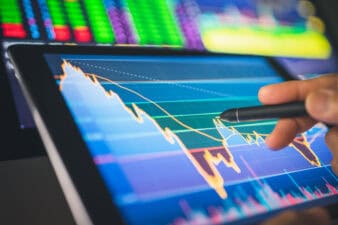Canadian companies seem to have caught the American bug for share buybacks in recent years. Over the past 12 months, companies listed on the Toronto Exchange collectively bought back shares worth $50 billion, or 2% of the stock market’s entire market value.
Bear in mind, the S&P/TSX Composite Index’s dividend yield is 3.1%, which means the hidden shareholder return is now comparable to the stock market’s dividend payout. Companies like Thomson Reuters have been so aggressive that they’ve bought back shares worth nearly half their current market value since 2001.
If executed correctly, share buybacks should create more value for long-term investors than dividend payouts because they mitigate the impact of taxes and boost earnings per share. Buybacks could also be a sign that the management believes the stock is undervalued. With that in mind, here are the top two companies with the largest stock-buyback programs.
Asset manager
There’s nothing better than a buyback program deployed by a professional investment company with a proven track record. With its reputation for capital allocation and dividend growth, Brookfield Asset Management (TSX:BAM.A)(NYSE:BAM) has certainly proven its investment prowess by compounding its book value at a rate of 10.6% over the past five years.
The asset management giant now expects to deploy a jaw-dropping $40 billion to buy back its own shares over the next decade. That amount represents more than half (57%) of the company’s current market capitalization.
Not to mention the fact that the holding company already provides a 1.2% dividend yield and has managed to expand its annual dividends at a rate of 5-8% over the past several years.
The company’s underlying subsidiaries also offer lucrative dividends and some aim for double-digit annual growth in their assets every year. All these factors have cemented Brookfield’s reputation as one of the best value creators in Canada.
Auto parts manufacturer
The third-largest auto parts supplier in the world, Magna International (TSX:MG)(NYSE:MGA), is also one of the most aggressive buyback stocks on the market. Magna’s buyback program isn’t new. In fact, the company’s volume of repurchases accounts for 4.8% of the entire value of all Canadian buybacks since 2001.
The company’s ongoing program was launched on Nov. 15, 2018 and is expected to end no later than Nov. 14, 2019. Over this period, the company has been approved to buy nearly a 10th of its outstanding market float.
The ongoing chaos in the global automotive sector has taken a toll on Magna’s stock, which is currently trading at the same level it reached in 2015. The emissions scandal, growing regulatory burden, lack of demand, electrification, and rise of new competitors has punished the global auto sector, but Magna expects to come out on top once the dust settles.
In fact, I believe the company is well positioned for a recovery when the market cycle turns positive and could be a better bet than Tesla.
Bottom line
Not all buybacks create value for shareholders. Often, companies spend too much on buying back stock while their market value is gradually eroded. However, the two companies on this list have the right framework and business model to create tremendous value for shareholders through their massive payouts.
 Stock Up Sale
Stock Up Sale







